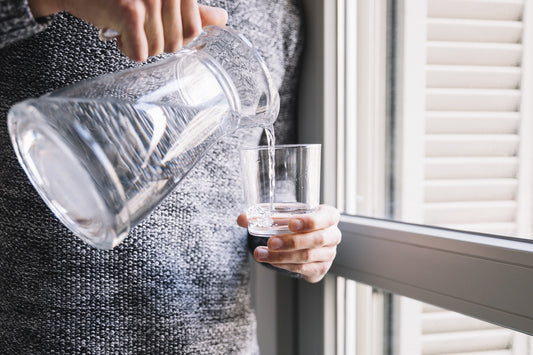Swimming pools are a fantastic addition to any home, providing a space for relaxation, exercise, and fun. However, maintaining a pool's clarity and cleanliness is crucial. Enter the cartridge filter, a hero in the world of pool maintenance. Let's dive deeper into understanding this essential tool.
Introduction to Cartridge Filters
What is a Cartridge Filter?
A cartridge filter, in its essence, is a filtration system designed for pools. It uses a pleated, fabric-like medium to capture and hold onto dirt, debris, and other impurities. Unlike its counterparts, such as sand or diatomaceous earth filters, cartridge filters operate without the need for backwashing. When they accumulate dirt, you simply remove the cartridge, give it a good rinse or clean, and then replace it. This design makes it user-friendly and efficient.

Image by Freepik
Benefits of Using Cartridge Filters
Cartridge filters come with a plethora of advantages:
Efficiency: Their large surface area means they can capture more dirt and debris, leading to clearer water.
Water Conservation: Without the need for backwashing, they save significant amounts of water.
Space-saving: Their compact design means they require less space than other filter types.
Cost-effective: In the long run, they can be more cost-effective as they require less frequent replacement and conserve water.
The Importance of Filter Size
How Size Affects Filtration
The size of your cartridge filter plays a pivotal role in its efficiency. A larger filter can process more water at a time, ensuring quicker and more effective filtration. For instance, a filter with a larger square footage can cycle through a pool's water volume faster, ensuring that impurities are removed more efficiently.
Choosing the Right Size for Your Pool
Selecting the right size is paramount. A filter that's too small might struggle to clean the water effectively, while an oversized one might be overkill, leading to unnecessary costs. Factors to consider include your pool's volume, the typical amount of debris it collects, and the manufacturer's recommendations.
Monitoring and Maintaining Flow Rate

Importance of Accurate Flow Rate
Flow rate, or the volume of water your filter can process in a given time, is a critical metric. An accurate flow rate ensures that your pool water undergoes effective filtration, leading to clearer and cleaner results.
Tools for Measuring Flow Rate
For those keen on precision, tools like flow meters can be invaluable. These devices offer a precise reading of your pool's flow rate, ensuring that your filter operates at its optimal capacity.
Cleaning and Maintenance Tips
Frequency of Cleaning
While cartridge filters are designed for efficiency, they aren't maintenance-free. Depending on factors like pool usage, debris levels, and local environment, you might need to clean your filter every 2-4 months. Regular cleaning ensures optimal performance and extends the filter's lifespan.
Signs Your Filter Needs Cleaning
Stay vigilant for signs that your filter needs a clean:
- Reduced water clarity.
- Increased filter pressure.
- Slower water flow rate.
- Visible dirt on the cartridge surface.
When to Replace Your Cartridge Filter
Common Signs of Wear and Tear
Like all things, cartridge filters have a lifespan. Signs that it's time for a replacement include:
- Uneven dirt distribution.
- Gaps or rips in the pleats.
- Bent or misshapen pleats.
- Persistent dirt even after cleaning.
The Lifespan of a Typical Cartridge Filter
With diligent care and maintenance, a cartridge filter can serve you well for several years. However, factors like pool usage, debris levels, and cleaning frequency can influence its longevity. Regular inspections and timely replacements ensure your pool remains in top condition.

Conclusion: Making the Most of Your Cartridge Filter
Cartridge filters, with their efficiency and user-friendly design, are a boon for pool owners. By understanding their workings, choosing the right size, and maintaining them diligently, you can ensure crystal-clear pool water for years to come.
FAQs
How often should I replace my cartridge filter?
Typically, every 1-3 years, but this can vary based on usage and maintenance.
Can I use any cleaning agent for my cartridge filter?
It's best to use cleaners specifically designed for cartridge filters to avoid damage.
How do I know the right size of cartridge filter for my pool?
Consider your pool's volume, consult the manufacturer's recommendations, and seek advice from pool professionals.
Are cartridge filters suitable for all pool types?
Yes, they can be used for various pool types, but ensure you choose the right size and model.
What's the primary difference between cartridge filters and sand filters?
Cartridge filters use a fabric-like medium for filtration and don't require backwashing, while sand filters use sand and need regular backwashing.
People also search for Hot Water Dispensers





